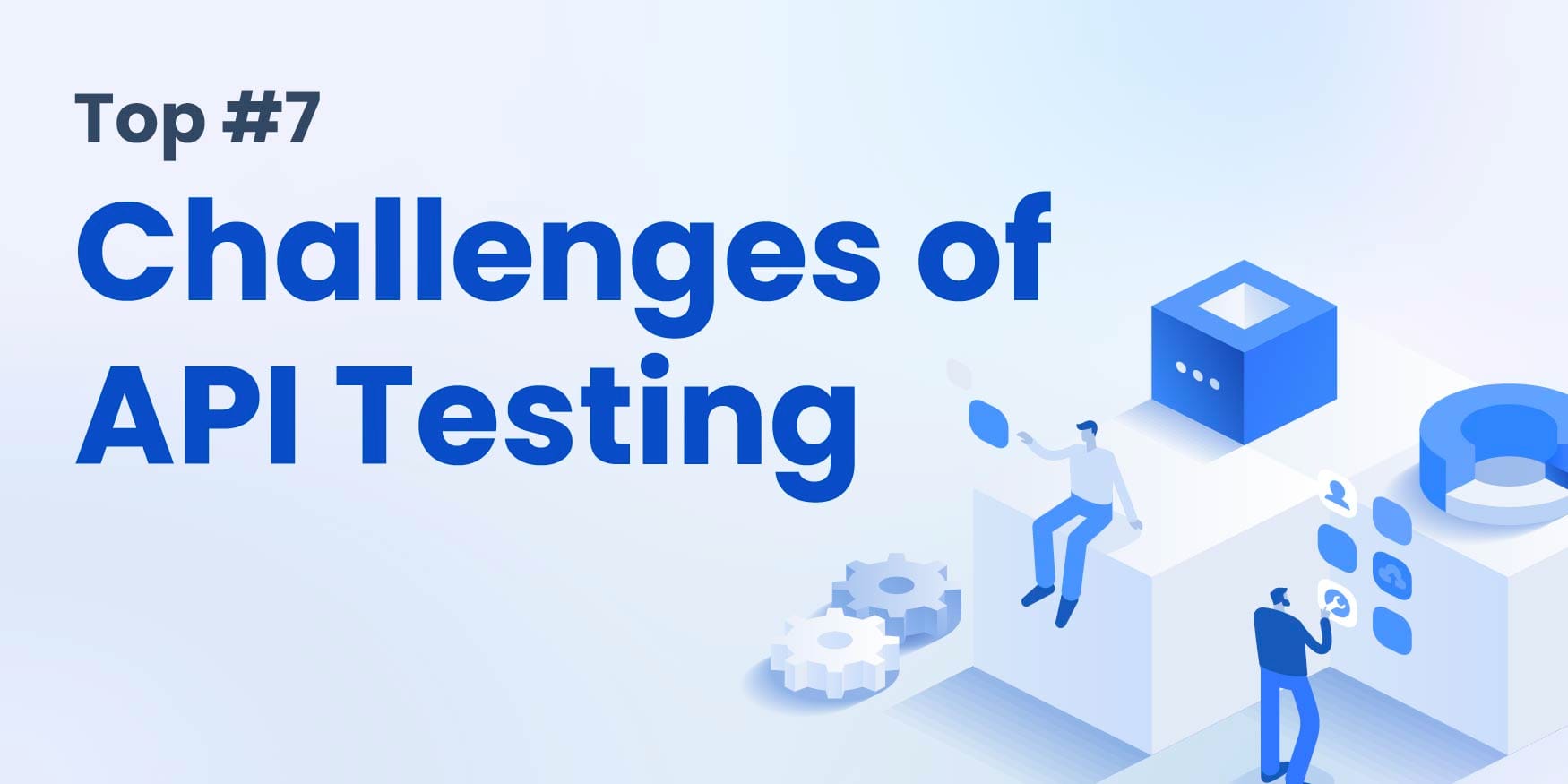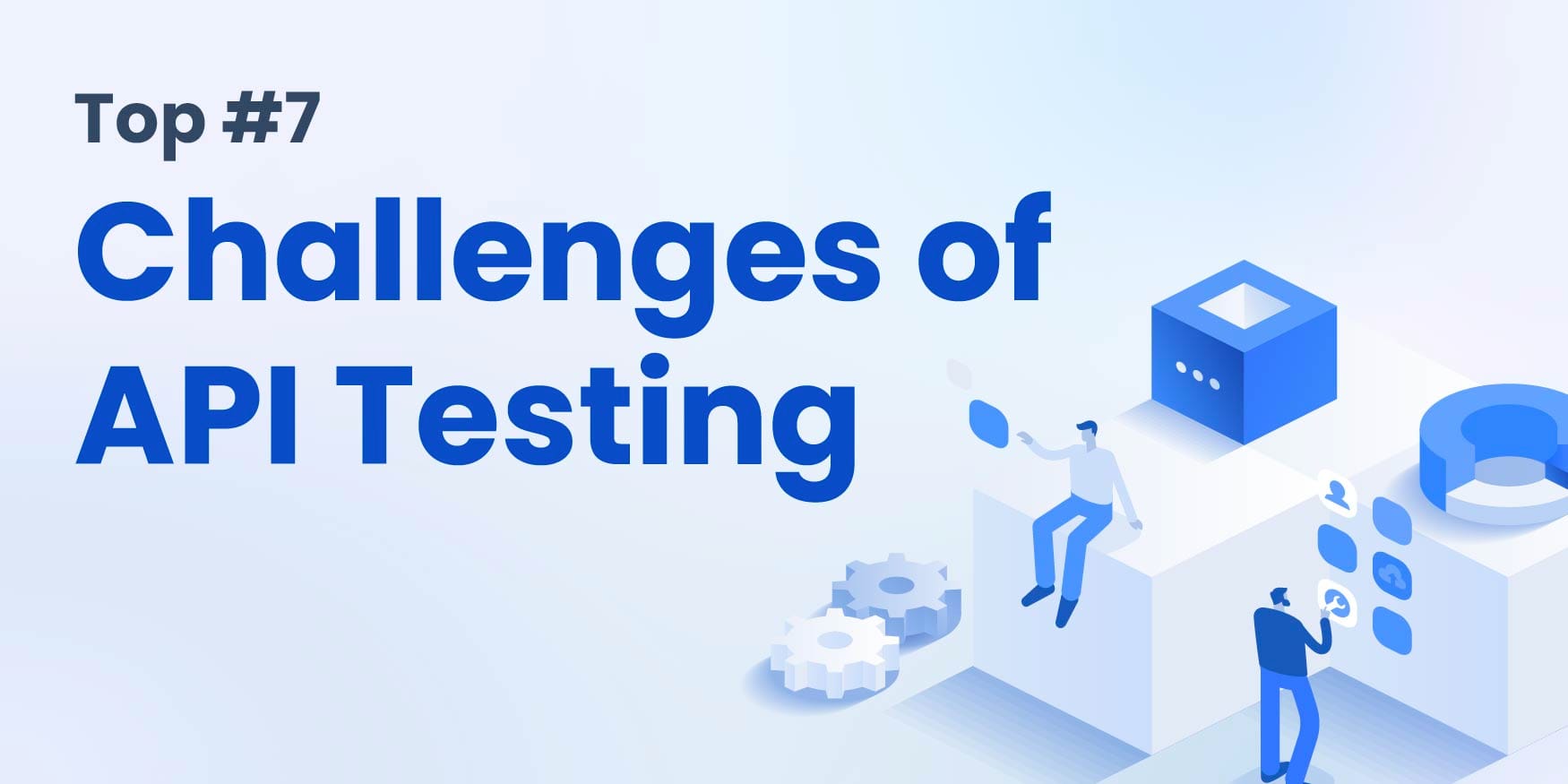Top 7 Challenges of API Testing: Insights for Developers and API Teams
 Treblle
Treblle

API testing is a critical pillar in the development process, pivotal for ensuring robust and efficient application interfaces. In today’s fast-paced digital world, developers and testers must prioritize API testing to safeguard functionality, performance, and security. Understanding and overcoming testing challenges is essential as APIs become more intricate and central to software ecosystems.
This article delves into the top challenges facing API testing, from complex architectures and security vulnerabilities to integrating testing within CI/CD pipelines. Each challenge presents an opportunity for developers to refine their skills and elevate the quality of their APIs.
#1 - Complex API Architectures
The evolution of intricate API architectures, such as microservices and hybrid models, has redefined the boundaries of efficiency and scalability. These architectures break down applications into smaller, interconnected services and offer unparalleled flexibility and performance improvements.
However, this complexity presents a unique set of challenges for API testing. Microservices, for instance, operate independently yet in tandem, necessitating a testing approach that encompasses individual service functionality and seamless integration. This multi-layered structure demands a meticulous and comprehensive testing strategy, addressing the internal mechanics of each service and its collective orchestration.
Additionally, the hybrid model blends the traditional monolith structure with modern microservices, adding another layer of complexity to API testing. These require a dual-focused testing strategy that ensures the core's efficiency while simultaneously validating the speed and independence of microservices.
#2 - Ensuring Interoperability and Compatibility
An API’s ability to seamlessly interact across environments and platforms isn’t just desirable; it's a requirement. This is especially pertinent for those integrating with an API monitoring tool, where consistent performance and reliability are paramount. An API that can adapt to different platforms broadens its usability and boosts its efficiency. This adaptability is essential in maintaining a smooth, uninterrupted flow of data and services, which is crucial in today's ecosystem.
However, the challenge amplifies when considering integrating APIs with third-party software. Ensuring compatibility with these systems requires careful planning and testing. Devs need to navigate through a maze of software versions, frameworks, and custom configurations, all while maintaining the integrity and performance of their API.
#3 - Bad Documentation
The challenge of inadequate documentation is a hurdle that developers often stumble upon. Clear, up-to-date, and comprehensive API documentation helps developers (whether in-house or external) paint a clear picture of an API’s functionalities and integrations. However, the reality is often different – outdated, sparse, or even missing documentation.
This common issue can significantly impede the effectiveness of API testing, leaving devs to navigate the murky waters of API functionalities without a compass. The lack of precise documentation hinders understanding and increases the risk of errors and inefficiencies in integrating these APIs. This is critical for developers relying on APIs for seamless system interoperability and application performance.
In scenarios where API documentation is less than ideal, devs need to adopt proactive testing strategies. One effective approach is exploratory testing, which involves interactive and intuitive testing of the API to uncover its behavior under various scenarios. This hands-on method can compensate for the gaps in documentation by revealing insights into the API's functionality and limitations.
#4 - Balancing Automation with Manual Testing
Automated testing, including for APIs, enables devs to rapidly run test cases, helping to ensure consistency and reliability in results while also saving time. This type of testing is perfect for performing repetitive tasks, handling large volumes of data, and detecting regressions in functionality.
However, that doesn’t make it perfect.
Automated tests can miss nuanced or unforeseen issues only human insight can see. Manual testing is equally important, offering the human element of experience to explore and identify complex, real-world user scenarios that automated tests may overlook. Utilizing both methods is essential in creating a comprehensive testing strategy, ensuring APIs are robust in functionality and deliver a user-friendly experience.
Some of the best practices for integrating manual and automated testing in API development include:
- Identifying Test Cases for Automation - Prioritize repetitive, data-intensive, and regression tests for automation.
- Manual Testing for Exploratory Scenarios - Utilize manual testing for exploratory, usability, and ad-hoc scenarios.
- Iterative Approaches - Start with manual testing to understand the API, then gradually introduce automation for more efficiency.
- Feedback Loops - Use insights from manual testing to refine and update automated test scripts.
- Balanced Test Coverage - Ensure a comprehensive coverage that leverages the strengths of both testing types.
- Continuous Learning - Adapt and evolve testing strategies based on feedback from both automated and manual testing outcomes.
#5 - Identifying and Mitigating Risks
Cyber attacks frequently target APIs due to their access to sensitive data and systems. Neglecting security in API testing can lead to disastrous breaches, compromising user data, and a massive blow to trust with your users. Developers must prioritize security in their API testing strategies, ensuring that APIs are effective, efficient, and hardened against potential cyber threats.
Common security vulnerabilities in APIs include SQL injection, cross-site scripting (XSS), and unauthorized data exposure. To combat these risks, developers should employ a variety of testing methods. Penetration testing, for instance, simulates cyber attacks to identify weaknesses in the API’s security armor. Regularly updating and scanning for vulnerabilities using automated tools can also play a pivotal role in maintaining security. Additionally, implementing rate limiting and robust authentication protocols can prevent malicious access and abuse of the API.
#6 - Performance and Load Testing
APIs must function correctly and perform efficiently under diverse and often strenuous conditions. Performance and load testing are essential in the API testing process, ensuring that APIs can handle varying levels of user demand without compromise. An API must be able to sustain performance under heavy load, or it can severely impact their systems and users.
Developers must rigorously test APIs to ensure they can handle peak traffic without latency issues, crashes, or data losses. This is particularly crucial for APIs in high-traffic sectors like e-commerce, media streaming, and financial services, where even a minor performance hiccup can lead to significant user dissatisfaction and revenue loss.
To ensure robust API performance, developers should adopt the following strategies:
- Simulate Real-World Scenarios - Use load testing tools to simulate real-world traffic conditions, understanding how the API behaves under different load levels.
- Incremental Load Testing - Gradually increase the load to identify the point at which the API’s performance starts to degrade.
- Monitor and Analyze Performance Metrics - Keep a close eye on key performance indicators like response time, error rate, and throughput.
- Stress Testing - Push the API beyond its standard operational capacity to see how it handles extreme conditions.
- Implement Throttling and Rate Limiting - These measures can help prevent API overuse and ensure stability during traffic surges.
- Optimize Code and Infrastructure - Regularly refine the API code and backend infrastructure to enhance performance efficiency.
- Regular Performance Reviews - Continuously review and update testing strategies to align with new features and user demands.
#7 - Continuous Integration and Deployment (CI/CD)
Integrating API testing into CI/CD pipelines poses a unique set of challenges, especially in Agile development environments where speed and adaptability are key. The biggest hurdle is ensuring that API tests are comprehensive yet efficient enough to keep pace with rapid deployment cycles. Traditional testing methods, often time-consuming, may conflict with the agile ethos of quick releases and iterative updates.
To effectively adapt API testing in CI/CD frameworks, consider:
- Automating Where Possible - Implement automated tests for routine checks, allowing for faster feedback and efficient use of resources.
- Prioritizing Critical Tests - Focus on critical path testing in each iteration to ensure essential functionalities are always covered.
- Incorporating API Monitoring Tools - Use these tools to continuously track API performance and health post-deployment, enabling proactive issue identification.
- Embracing Shift-Left Testing - Integrate testing early in the development process to identify and address issues sooner, reducing downstream delays.
Wrapping It Up
API testing is evolving, with developers facing challenges ranging from complex architectures to security vulnerabilities and the integration of testing in CI/CD pipelines. Embracing a blend of automated and manual testing strategies, prioritizing performance under varying loads, and adapting to continuous integration is critical to overcoming these challenges.
Subscribe to my newsletter
Read articles from Treblle directly inside your inbox. Subscribe to the newsletter, and don't miss out.
Written by

Treblle
Treblle
Treblle helps engineering and product teams build, ship and understand their REST APIs in one single place.